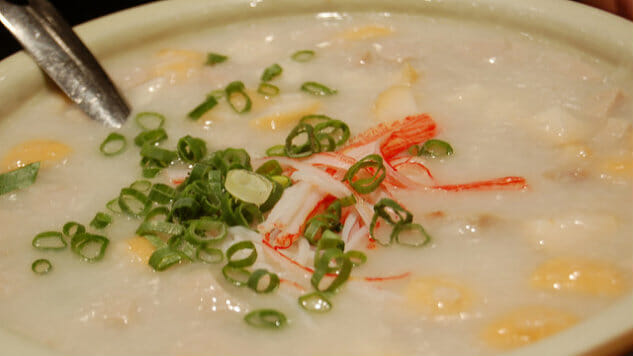
For many around the world, porridge represents ultimate comfort, served up in a bowl. It’s simple to make, nutritious and warming. A big bowl of porridge can rev your internal motor at breakfast, help you unwind after a late night, or ease the previous night’s excesses. It can be made sweet, savory, thin or thick, with toppings or without. The only rules for entry into the “porridge club” are that it needs to be made with a grain and it’s usually a dish best served warm to hot.
Welcome to our global tour of porridge, a humble dish that’s been getting a gourmet makeover from big-name, Michelin-starred chefs lately. Because, you know, with humble comfort foods gracing white-tablecloth restaurants, what’s old is new again. So pass the porridge.
Grits
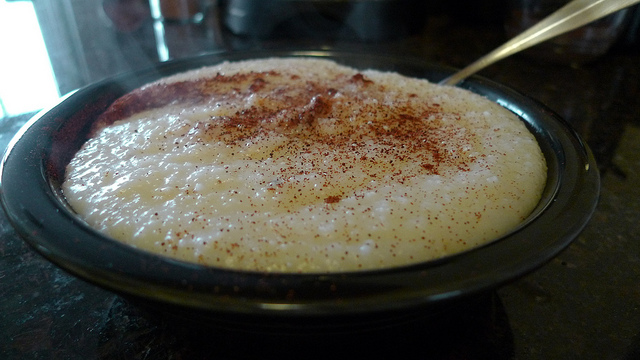
Grits are ground, dried maize (from either white or hominy corn) that gets boiled until thick, after which it’s usually seasoned and served savory. Native American in origin, this porridge is a perennial favorite in the Southern United States, where it’s eaten at breakfast or with savory mains. Sometimes, you’ll find chefs adding heaps of cheese and herbs, like in Ponte Vedra’s Palm Valley Fish Camp, where ooey-gooey grits cradle a tasty mound of locally-caught shrimp, giving the dish its home cooking-with-a-twist appeal.
Congee
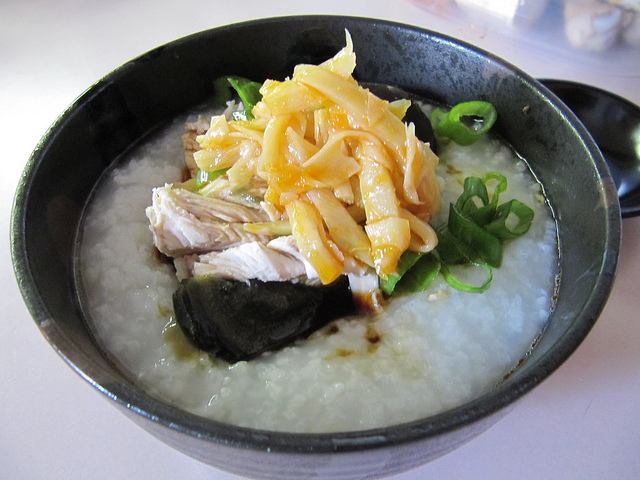
Congee is a savory rice porridge widely consumed throughout Asia. It’s very often a breakfast dish, but it can also be served as a main meal with the addition of protein and vegetables. It can be made with leftover rice to form a thin porridge, though a thicker version starts with raw grains, always boiled in water. To give congee flavor, depending on the region you’re in, the addition of toppings range from pickled vegetables and eggs to fermented tofu. In many Asian cultures, congee is also considered the go-to hangover helper of choice.
Arroz Caldo

China has its congee, and the Philippines has its interpretation along the same lines called arroz caldo or lugaw. As with congee, rice (raw or leftover) is boiled in a ginger and bone-in chicken broth until it breaks down into a porridge. Usually eaten midday as a snack for “merienda,” or as a full meal, Filipinos like to top the tasty creation with fried garlic slivers, thinly sliced green onion and a splash of tropical calamansi lime juice.
Kasha

Russia, Poland and various Central-Eastern European countries like to boil whole-grain buckwheat or buckwheat groats in water or milk as their porridge of choice. Usually eaten as a side dish, or even as a dish in itself, it’s considered highly nutritious and is served to patients in Ukrainian hospitals. Amongst Ashkenazi Jews, kasha often makes its way into knishes and matzo ball soup too.
Polentina

In the Southern United states, it’s all about the grits. In rural Italy, it’s polentina, also known as corn porridge or polenta soup. Eighteenth-century Italian peasants working the countryside often ate this and other simple dishes known as cucina di grembiule (cuisine of the apron). Enriched and/or infused with fruit, like orange, polentina becomes the ideal, warming breakfast when creamy comfort is in order.
Žganci
Žganci, from the Slovenian verb žgati to burn or toast, is a Slovenian and Croatian dish that’s made with either maize, wheat or buckwheat flour, water, cooking oil and salt. When eaten for breakfast, it’s served with milk, honey, yogurt and a sprinkling of cracklings. A savory version of the crumbled porridge is often served as a side dish, accompanying meat as part of a hearty main meal.
Upma
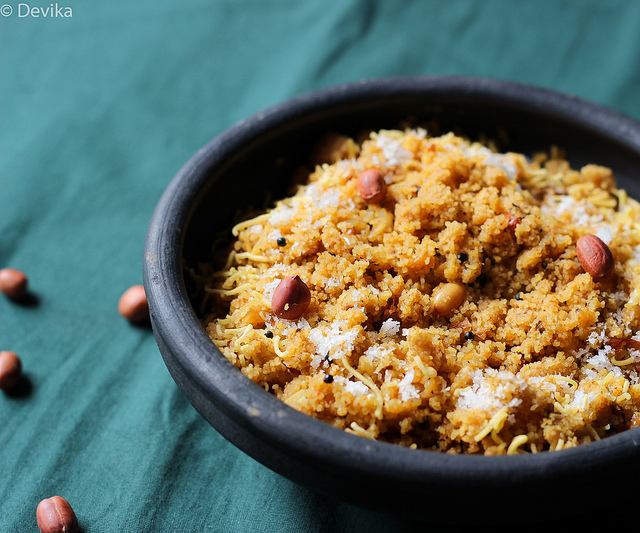
The most common South Indian or Sri Lankan Tamil breakfast dish is a thick porridge made from dry roasted semolina or coarse rice flour known as upma (also called uppuma or uppittu). Oil-fried spices, chiles and vegetables flavor the boiled porridge. Depending on your preferences and region, you might garnish with raw or sprouted beans, nuts such as cashews or a fragrant masala spice blend.
Champurrado
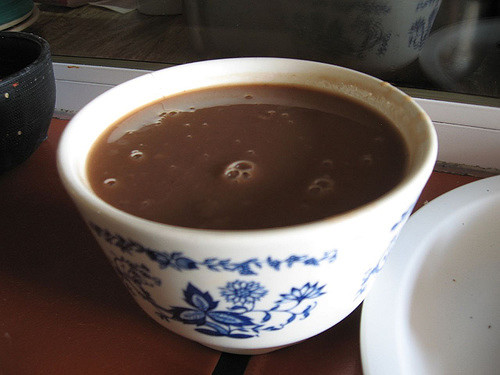
In Mexico, this is a thick drink dating back to the Azetcs, and is made with corn masa harina or masa de maiz (lime treated/nixtamalized corn dough), water, and ground cacao beans. It’s served hot, sometimes prepared with milk and spices like star anise, cinnamon and vanilla, then usually sweetened (with panela) and consumed on colder days when a fortifying cup of drink with some heft is in order.
Oatmeal
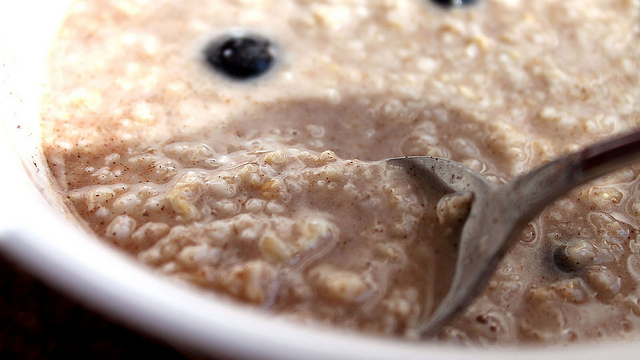
While oats may have originated in Central Europe and spread from there, they’ve remained a big hit in the United Kingdom and in North America. Thick oatmeal porridge is a breakfast regular. Made with either quick oats or the more sturdy steel-cut oats that take longer to cook, they’re usually made with a pinch of salt, water or milk, and then sweetened with raisins, brown sugar or maple syrup.
Rugmelsgrød
Made from rye meal or rye flakes and water, this rustic dish comes from the island of Bornholm in Denmark. It’s often served as part of a traditional dinner, but in The Everything Nordic Cookbook by Kari Shoening Diehl, it’s served with a drizzle of light golden syrup or lingonberry jam and a cloud of whipped cream. Sounds like porridge dessert to us!
Genfo
This is a thick, mixed legume and grain porridge made with a any of the following: millet, sorghum, maize, chickpeas, yellow peas, Ethiopian oats, wheat, barley, soybeans and/or ensete tree starch. Usually consumed in Ethiopia for breakfast along with a healthy spoonful of kibe (spiced butter) or yogurt, it’s a traditional Sunday breakfast. It’s also considered a nutrient-rich, healthy meal for pregnant women or for those who have just given birth.
Toronto based food and travel journalist, Mary Luz Mejia has been published in Saveur, Travel + Leisure online, The Globe & Mail and Paste Magazine’s Travel section. Being Latin American herself, she likes a good, chocolaty champurrado; find her sipping one @MaryLuzonFood.
Photos by snowpea&bokchoi CC BY, Will CC BY, Jo del Corro, John Herschell, Leticia AvierkiievaCC BY-ND, Stu Spivack CC BY-SA, Devika CC BY-SA, Daniella Segura CC BY